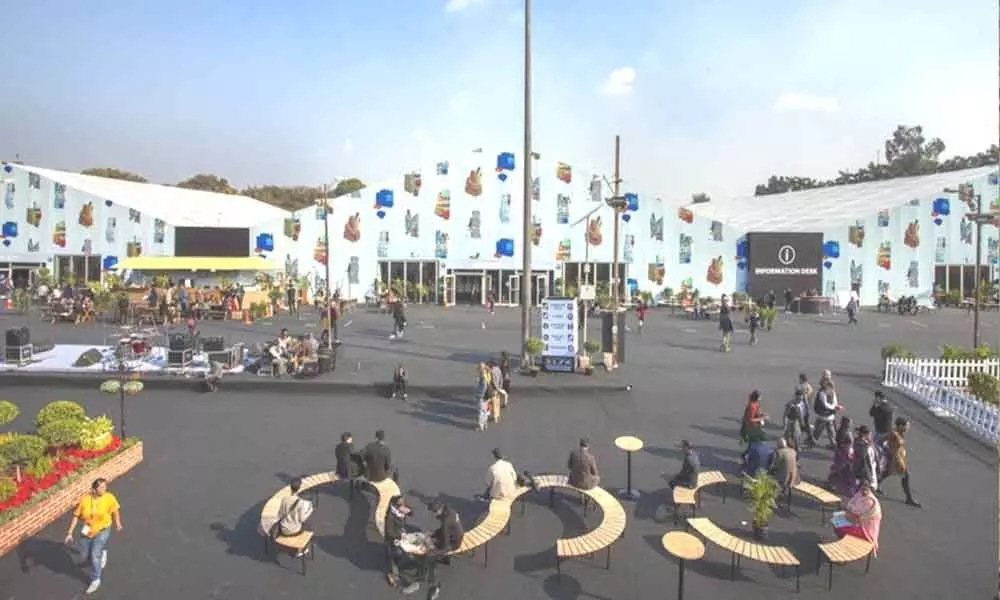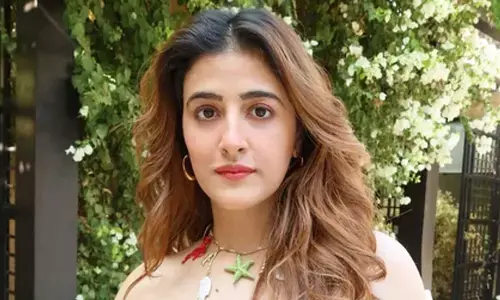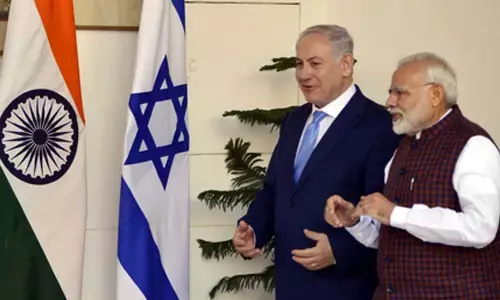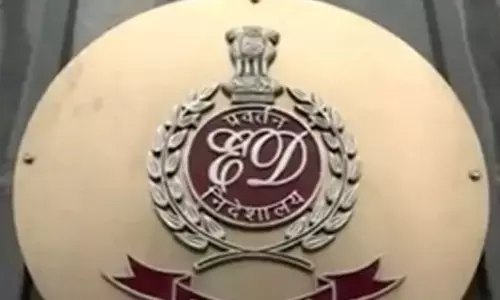Vignettes from IAF 2020

Whether it is to get visible in an art ecosystem or to showcase cutting-edge contemporary art that define the times we live in, India Art Fair was a hit among art galleries.
Focus on art marketplace
Whether it is to get visible in an art ecosystem or to showcase cutting-edge contemporary art that define the times we live in, India Art Fair was a hit among art galleries.
As 81 global exhibitors come together in the national capital, a few of the leading ones weighed in on their participation in the four-day art event.
"The current mood in the Indian art world is very positive. It's the time of the year when art is foremost on everyone's mind, and people are looking forward to the exhibitions that the galleries are putting up and what the fair will have on offer.
"The fair provides a platform to reach a wide audience across geographies. It is also an opportunity to increase exposure with people from diverse backgrounds - be it collectors or people who are starting their engagement with contemporary art," Roshini Vadehra, Director, Vadehra Art Gallery shared.
The gallery has been participating in the fair since its inception and says that there is a sense of scale and vibrancy in the works they exhibit this year be it Atul Dodiya's triptych 'Guernica Bouquet' or Rameshwar Broota's large triptych.
Another gallery exhibiting since the beginning is Art Alive Gallery. Its director Sunaina Anand says it has grown tremendously over the years. "It's a very good concept and there was nothing like this before."
Shireen Gandhy, Director at the Mumbai-based Chemould Prescott Road has an interesting backstory to tell.
"By the early 2000s, Art Fairs took on a new dimension on the world art stage. While the "exhibition stage" for galleries has never been compromised, the art fair took on an equally important dimension. Indian gallery participation in fairs like Art Dubai, Fiac, Frieze and later Art Basel was a kind of a 'late entry'. Neha Kirpal who started India Art Fair - saw the void, and Indian galleries after a year of watching the first edition of this fair took the plunge in 2009."
They did not look back! "It is that platform that allows us to 'show ourselves up' with the rigour of our programme and our artists. It has become a stage where important museum curators and patrons visit. It is a place where transactions happen not only with these international audiences and our Indian collectors, but also with Tier-2 cities. Isn't the purpose of art to also be able to spread one's wings? What better way than a fair like ours to achieve that?"
Ashish Anand, CEO & MD of DAG finds India Art Fair relevant and important not only for galleries but for the art space in general.
"People from all over the world -- a range of people, from connoisseurs and collectors to artists and art historians, to those beginning their journey of understanding and enjoying art -- come to attend the fair, highlighting its importance in showcasing South Asian art to large and diverse audiences."
DAG has handpicked a collection of modern art and pays an ode to the most exquisite artworks of the 19th and 20th centuries.
Among the international galleries, Eun Kyung Sung, Director of South Korea-based Simyo gallery, cites their participation in "India's most well-known fair" due to the huge potential of Indian market and the experience of high standard of Indian clients appreciating Korean art"
Raja Ravi Varma: The crown jewel
In a dark room at the ongoing India Art Fair in the national capital, one of India's biggest art events, shines through an illuminated figurative painting by Raja Ravi Varma, the indisputable father of modern Indian art. What is interesting is that it is the only Raja Ravi Varma painting in the entire Fair, and the gallery presenting it has nothing else on display.
Amit Vadehra from the presenting Crayon Art Gallery said that they chose just one work to give the painting the importance it deserves. "We used special lighting in a dark space with a bench inspired from the 1700s," he shared.
Raja Ravi Varma (1848-1906) is India's most celebrated classical painter of the modern era, best known for his fusion between European academic style with mythological themes from Puranas and other Hindu texts.
His exhibited painting eVishnu on Sheshnag' is an iconic and seminal representation of Raja Ravi Varma's work, depicting the classical iconography of the deity represented here with his wives, Goddess Lakshmi and Goddess Bhumi on either side, on the seat of the Sheshnag, the snake king.
Also known as Shesha, the snake king is depicted in delicate fashion, in Varma's renowned painterly style.
Also on view is the painting's oleograph on paper, a more affordable version of the coveted painting.
Canadian artist exhibits Bollywood-inspired art
Inspired by the imagery of Indian movies of the 1960s, the paintings of Canada-born artist Marcel Dzama at the India Art Fair referred to Indian culture and included details such as Bollywood dancers and regional wildlife.
Presented by the David Zwirner gallery, which is making an appearance in the Fair for the third consecutive year, Dzama's work is a visual exploration of the Indian ethos, with hints of divine and royal iconography.
Dzama first rose to prominence in the late 1990s for his otherworldly scenes that recall childhood fantasies and fairy tales. His work draws equally from folk vernacular as from art-historical and contemporary influences, and presents a blurred relationship between the real and the subconscious through an immediately recognisable visual language.
"You could rent Bollywood films back in the day. I've been drawn to choreography and dance, and costumes. I have also been drawn to masks, I would dress up in a costume as a child, and pretend I was that character all day long," Dzama said, pointing to his work that seamlessly merge Indian mythology, pop culture and memories.
His scenes are often also inhabited by an expansive cast of recurring human, animal and hybrid characters, as well as motifs such as masks and chess pieces.
Dzama's works on paper are presented alongside two sculptures by the artist, as well as a new large-scale wall mural, which Dzama painted directly on to the gallery's booth at the fair, demonstrating the breadth of his wide-ranging artistic practice.















